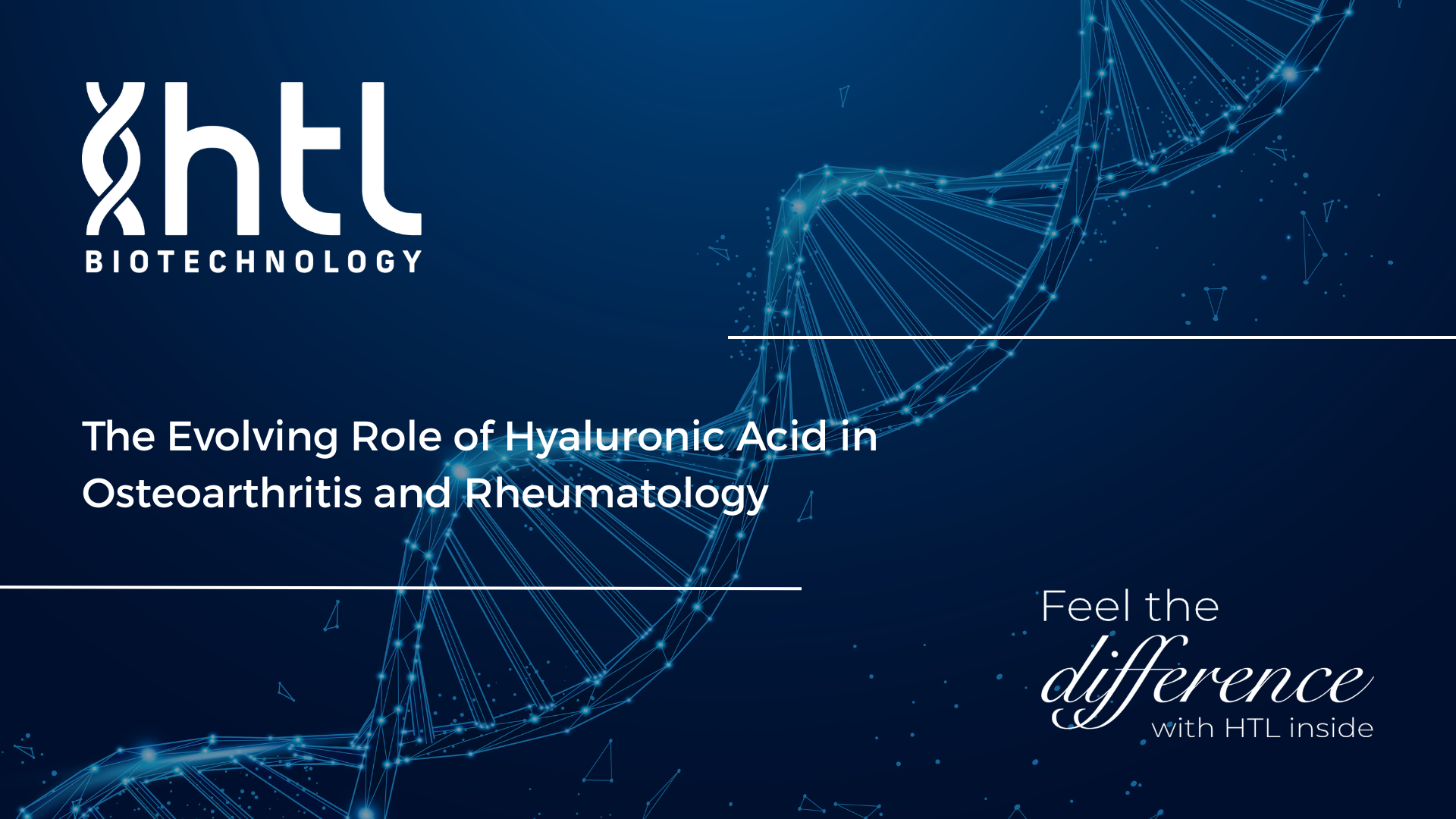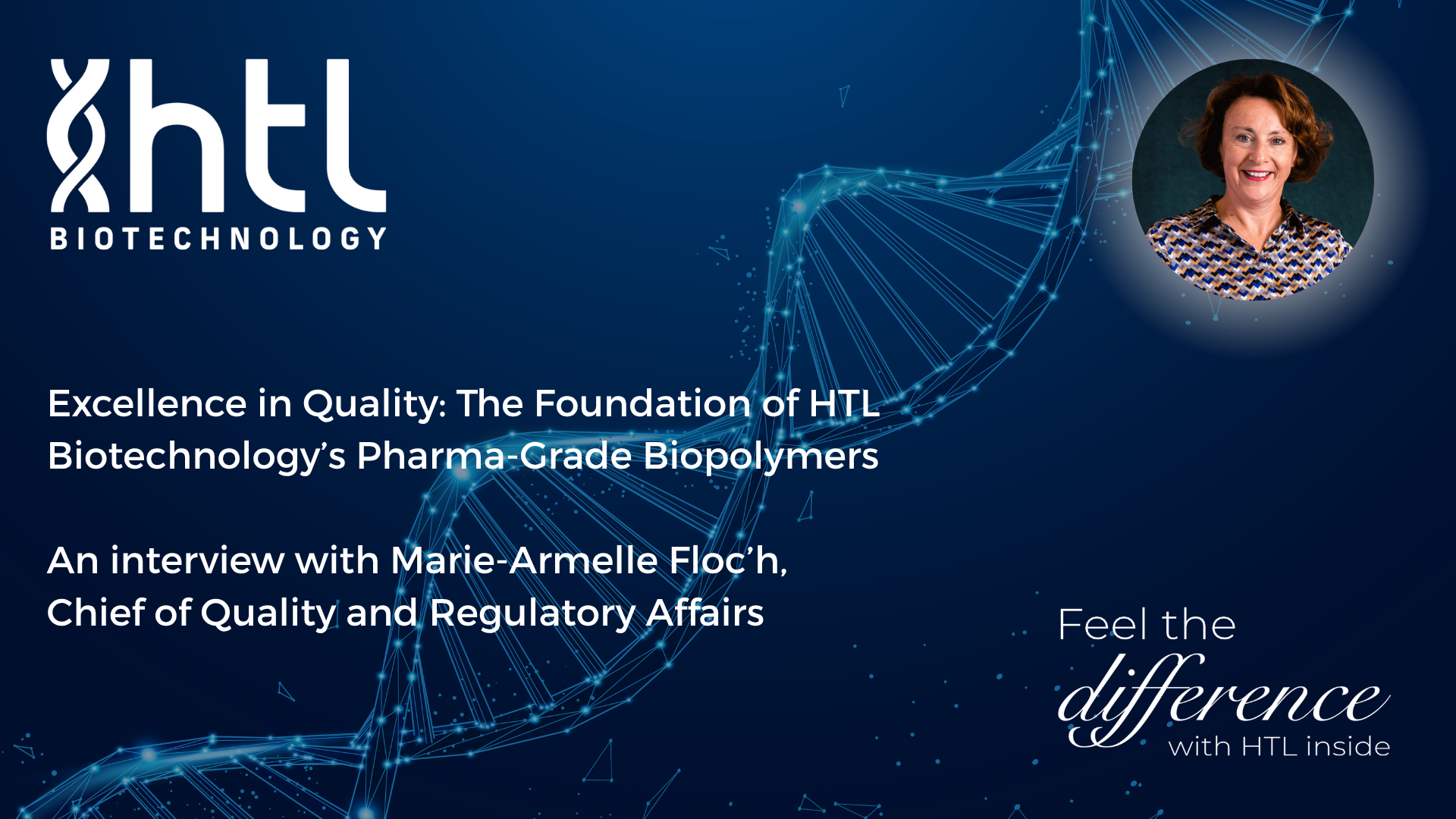HTL Biotechnology inaugurates a new production line dedicated to sterile Hyaluronic Acid
As part of National Biomanufacturing Day 2025, HTL Biotechnology inaugurates a new production line dedicated to Hyaluronic Acid.
Known for its biocompatibility, viscoelasticity, and exceptional water-retaining capabilities, HA plays a pivotal role across numerous therapeutic areas. Notably, ophthalmology was the first field to harness the power of HA, setting the stage for decades of innovation in ocular treatments.
Found naturally in the eye and connective tissues, HA contributes to lubrication, maintaining tissue hydration, and cellular repair — features that are particularly beneficial in the delicate environment of ocular structures. Since its first FDA approval in 1979 with Healon, HA has become foundational in a wide array of ophthalmic procedures and therapies.
One of HA’s earliest and most established uses is in cataract surgery. HA-based viscoelastics are used to maintain the anterior chamber, protect the corneal endothelium, and support intraocular lens (IOL) implantation. These formulations reduce mechanical trauma and ensure a smoother surgical process. 2
In corneal transplants, HA helps preserve donor corneas by maintaining hydration and structural integrity. This contributes to better tissue viability and postoperative healing, supporting the graft’s integration into the host eye. 2
During procedures such as goniotomy or trabeculectomy, HA maintains space within the eye, helping to prevent tissue collapse and aid surgical precision. It also contributes to improved postoperative recovery by reducing inflammation and supporting wound healing. 2
HA-based eye drops are a frontline treatment for dry eye syndrome. By enhancing tear film stability and hydrating the ocular surface, HA alleviates symptoms such as irritation, burning, and visual fatigue. Its ability to retain moisture makes it particularly effective for long-term management. 3, 4, 5
As research advances, HA continues to be at the center of innovative solutions in eye care.
HA is being studied as a carrier for intravitreal injections, particularly for retinal conditions like age-related macular degeneration (AMD) and diabetic retinopathy. By controlling drug release and extending therapeutic duration, HA-based systems could reduce injection frequency and improve patient outcomes. 6, 7, 8
HA-infused contact lenses and hydrogel formulations are being developed to accelerate healing after corneal injury or surgery. These materials deliver moisture and create a protective barrier that promotes epithelial regeneration. 9, 10
Cutting-edge delivery technologies are incorporating HA into mucoadhesive inserts, hydrogels, and nanoparticles. 7, 8 One example is a preclinical ophthalmic insert that transforms into a hydrogel pellet on the eye’s surface, delivering drugs steadily over several days—potentially transforming treatment adherence. 11
Postoperative scarring remains a risk in many ophthalmic procedures. HA’s anti-fibrotic potential is being explored to prevent excessive tissue formation, particularly after glaucoma surgeries. Reducing scarring could preserve surgical success and long-term vision outcomes. 3, 10, 12
Cutting-edge research is now focusing on customizing HA molecules to enhance therapeutic properties. Scientists are also investigating its integration with stem cell therapies for retinal regeneration, aiming to create supportive scaffolds that promote cellular differentiation and repair in degenerative eye diseases.
Additionally, HA is being explored for use as an artificial vitreous substitute—a potential game-changer for patients undergoing vitrectomy for retinal conditions.
From its foundational role in cataract surgery to its promise in next-generation regenerative medicine, hyaluronic acid continues to redefine what’s possible in ophthalmology. Its unique combination of hydration, lubrication, and biocompatibility makes it an essential molecule in both established procedures and pioneering research.


Osteoarthritis is a degenerative joint disorder, often leading to chronic pain and reduced mobility as cartilage deteriorates over time.
Due to its viscoelastic properties, Hyaluronic acid (HA), a naturally occurring molecule in the body and a major component of the extracellular matrix, is an ideal candidate for addressing these degenerative processes of joint diseases. Recognized for its lubricating properties, HA is also shaping the management of osteoarthritis and rheumatologic diseases through its multi-faceted therapeutic potential.

Since 1992, HTL Biotechnology has pioneered hyaluronic acid (HA) production through bacterial fermentation, achieving unmatched purity and consistency for applications in ophthalmology, dermatology, and rheumatology.

HTL Biotechnology’s industrial platform is the backbone of its leadership in pharmaceutical-grade biopolymers. Built on more than 30 years of expertise, it combines not only reliability, and the highest quality standards, but also sustainability.